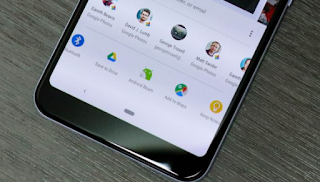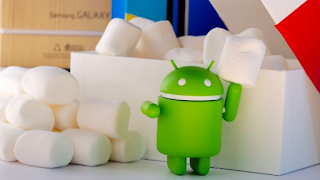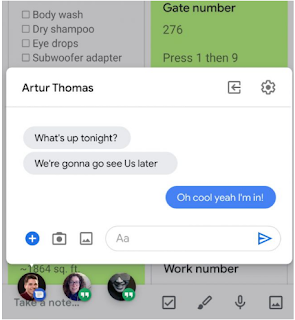Android 10 release date, new features and everything you need to know
We understand everything regarding the following big Android os upgrade, Android 10, which has been openly launched as of September 3 - however only for Google Pixel phones initially.
The most up to date major update was introduced as Android Q at Google IO 2019 however has actually been formally rebranded as Android 10. Sorry, treat names - switching over to numbers is easier for international individuals to comprehend.
As a global os, it is very important that these names are clear and also relatable for every person worldwide," Google VP of product management for Android, Sameer Samat, wrote in a blog post. "We assume this adjustment assists make launch names simpler and also much more user-friendly for our international neighborhood.
The Android 10 upgrade brings a lots of brand-new features, which Google has provided on its main web page for the brand-new software program.
Amongst all the new playthings, the long-awaited system-wide dark setting (called 'Dark Style') is the biggest shift from Android Pie. iOS-like Gesture Navigating has actually additionally been added, along with privacy controls and Focus Setting for closing notifications off when you require to get things done. There's also details on Task Mainline, which was introduced at Google IO 2019 that enables Google to beam over-the-air protection updates to phones between major updates.
What else is brand-new with Android 10? We've obtained a working functions listed here, based upon everything we have actually seen on the official page, in the continuous beta, and also what we saw at Google IO.
Cut to the chase
- What is Android Q? It's the next variation of Android
- When can you obtain Android Q beta? Download and install Android Q beta 3 now
- When will Android Q launch in full? August
- Just how much will Android Q set you back? It will (assumedly) be a free update
Android 10 launch day
- March 13: The very first Android 10 developer beta has launched
- April 3: Android 10 beta 2 provided us pests repairs and app bubbles
- May 7: Android 10 beta 3 launched at Google IO 2019
- Very early June: The final step-by-step update, beta 4, land in June
- July: Beta 5 and also beta 6, launch prospects, land this month
- September 3: The general public version is released - though not all phones get it on launch day
Android 10 has been officially released, however that doesn't imply it's readily available for all phones right now. Each OEM must establish their own version of the upgrade for each phone as well as work with providers to launch it, which can take months. Do not be amazed if your mobile doesn't get Android 10 up until 2020.
Obviously, the Google Pixel phones get the most up to date version on launch day - as well as unusual nobody, the Essential phone is likewise obtaining day one compatibility in select markets, according to this tweet.
Below is a full checklist of all the phones that have actually Android 10 so far.
- Google Pixel 3/ Pixel 3 XL
- Google Pixel 3a/ Pixel 3a XL
- Google Pixel 2/ Pixel 2 XL
- Google Pixel/ Pixel XL
- Essential Phone
Android 10: what's brand-new
We're obtaining a far better idea of the brand-new Android 10 attributes to come thanks to the beta of Google's mobile os. Additional functions and also pest solutions have actually come with all the beta releases up through the sixth and also final beta that appeared in early August.
Some of the modifications are confirmed, while others remain reports. Here's what you can anticipated ahead of the main Android 10 release date in August.
Beta 6 (Last).
The sixth as well as final beta does not include much - mainly insect solutions as well as optimizations - however it does allow apps to semi-disable the swipe-to-go-back motion.
Fundamentally, apps can block the motion from dealing with a certain part of the display (particularly. there's currently a "200dp upright app exclusion limitation for the Back motion"). But it won't block the motion from working entirely - we'll need to see if that exclusion zone is large enough for individuals to avoid inadvertently swiping out of an app (say, when they're gaming) when they anticipate not to.
Android Q will not have Android Beam of light.
One attribute Android 10 won't have is Android Beam, the NFC peer-to-peer sharing method when two gadgets are nearby. Positioning phones back-to-back will do nothing in the beta and final software application, we confirmed at Google IO.
Will Google change Android Beam with another peer-to-peer sharing approach? That remains to be seen. We might have to wait until the last Android 10 launch date to see it, or perhaps when the Google Pixel 4 launches (excepted in October).
Closing personal privacy loopholes.
A report from the International Computer technology Institute located that over 1,300 applications on the United States Google Play Store routinely scraped individual information from users even if clearly refuted by appropriate permissions settings.
Appmakers have actually been utilizing several clever workarounds to obtain the information they desired: if a customer set their approvals to not share place data, the apps took their MAC address from routers linked to the phone. They saved the device-identifying IMEI number accessed by one app and shared it with others. They even identified customer areas with image metadata.
Google is apparently taking care of these problems with the complete launch of Android 10 in August, though probably not in any scheduled beta in advance.
Foldable support.
Android 10 is planning for foldable phones in 2019, or "foldables and also ingenious new screens," according to the Android Developers Article.
The Samsung Galaxy Layer-- while it remained in our hands briefly-- seamlessly switched in between the folded up as well as unravelled screen states. By Google natively supporting this type of UI continuity in the backend, it'll likely concern more collapsible phones when they release with Android 10 onboard.
For designers, Android 10 beta 2 includes a 'foldables emulator' in Android Studio 3.5, according to Dave Burke, Google's VP of Engineering.
Android Q 'bubbles' multitasking.
You have actually seen the bubbles UI prior to if you have actually used Facebook Messenger chat heads. It's a very easy way to maintain active discussions on-screen as small drifting profile pics, while dealing with your typical jobs in the remainder of the user interface. You can touch the photo when you intend to switch back to the conversation.
Google is supporting this idea throughout Android 10 as well as calling it a brand-new means to multitask. Until now, its examples are pertaining to Messages and also Hangouts. However Google is lowering growth time, interactivity consistency, and also user personal privacy safeguards, so expect to see it in additional applications outside of Google's ecosystem.
Dark Theme, the system-wide dark mode.
There's a system-wide dark mode coming to Android 10 and also it's called Dark Theme. We've examined in out at Google IO and also it works as planned, yet needs to present to even more of the menus. So far it's limited to the settings menu. It's extremely early.
You'll be able to set off Dark Theme in 2 various ways, and also both remain in the notification color. The first way is with a commitment Dark Theme quick setups button that switches between the default Light Style as well as brand-new Dark Theme.
The 2nd means is to switch on a Battery Saver mode, which immediately switches on Android 10 Dark Theme. This is an advantage for phones with OLED screens, which will certainly melt less pixels by basically turning off pixels in areas of the display that are deliberately black.
New Android 10 privacy functions
The Android Developer Blog post revealing the developer beta verified a heavy emphasis on boosting personal privacy in Android 10, a focus that was reaffirmed in the Google IO 2019 keynote.
Customers will have much more control over app access to location info, shared files as well as databases like Photos and Videos. One more valuable modification: instead of applications instantly changing focus when they have an Activity in the background (like an alarm or call), appmakers can opt to send out critical notifications initially.
Android 10 beta 3 also presented a brand-new attribute-- Scoped Storage space-- which permits users to manage how apps gain access to external storage space (state, in a MicroSD card). It will certainly also much better protect users from being determined by limiting access to non-resettable tool identifiers, like your phone's serial number and/or IMEI, as well as randomizing its MAC address when connected to different Wi-Fi networks.
These may be several of one of the most onerous modifications for developers in Android 10, which is why, as the Android Developers Article checks out: "We are bringing these adjustments to you early, so you can have as much time as possible to prepare."
Job Mainline: safety and security updates in the background
One more new undertaking introduced at Google IO 2019 is Project Mainline, which allows Android devs to update crucial parts of Android (supposed 'components') without a complete software-- as well as seriously, without a full upgrade from OEMs.
These medical upgrades download behind-the-scenes from Google Play and fill them up whenever the phone following reboots. They will mostly be used to enhance privacy and also safety, though the Android Developers Article additionally states game designers will use it to update modules for constant system execution.
All gadgets that can run Android 10 will certainly be able to get Job Mainline.
5G
Android 10 has some certain dress up its sleeve for 5G. New APIs will certainly allow applications to identify customer link price and also latency, in addition to identify if the link is metered.
This will give programmers extra refined control over just how much data to send out to individuals, particularly when they have poorer connections or have data-downloading limitations.
Live Subtitle, and extra
One of several access features announced at Google IO 2019, Live Caption does what it states on the tin-- captioning video clip and also sound in real-time. The attribute does not require a net connection, transcribing message from the device's very own speech acknowledgment as well as NLP.
On the Google IO 2019 stage, we saw Live Inscription used in mix with Real-time Transcribe to input inbound sound to message, then have a customer message an action which was talked. In the demo, the combination-- called Live Relay-- enables a texting user to interact on a telephone call without ever talking a word.
The last access function pertaining to Android 10 is Task Euphonia, which aims to improve Android's spoken recognition to better process words spoken by users with speech impediments.
Programmer tools for apps: system setups, connectivity, media and also more
Designers will certainly have the ability to show contextually-important system setups within their apps, which uses the 'Slices' attribute that came in Android 9 Pie. So instead of having to browse to Setups to switch on Plane Setting or toggle Wi-Fi or Mobile Information on/off, state, you'll have the ability to do that right within your mobile web browser.
There are also tweaks to connection, consisting of 'adaptive Wi-Fi' that allows high performance/low latency modes, which would certainly be useful for points like on-line gaming or voice phone calls.
Like all the depth and also blur in Pixel electronic camera software application? In Android 10, apps can ask for deepness information (JPEG + XMP metadata + depth and self-confidence map) to, say, offer "specialized blurs and also bokeh options in your application," as the Android post suggests. "You can even utilize the data to create 3D images or assistance AR photography use-cases in the future."
Android 10 will also sustain even more multimedia codecs: AV1 to allow media providers stream high-quality video, Piece for audio encoding, as well as HDR10+ for high vibrant variety video "on tools that sustain it"-- like, say, the Samsung Galaxy S10 family.
As for video gaming, the Android 10 beta improves assistance for OpenGL in addition to pest repairs and also even more performance.
Much more permissions to maintain privacy
Android 10 will certainly overhaul permissions, from the general to particular, as well as we have actually listened to that individuals will be able to far better view what information they have actually shared.
Here's what we do not understand for sure, however have heard about: per the abovementioned XDA Developers leak, individuals will be able to consider a wide review of which apps they've allowed for sure points, like area or microphone accessibility. There's a search feature that lets you filter by permission item, permitting you to quickly see which apps you've admitted to your video camera, contacts, area and more.
You can likewise take a look at permissions each application has been provided and toggle them independently to set whether access is off, on, or on while the app is open.
Developer tools
There are lots of brand-new designer devices described by the XDA leak, yet it's unclear how every one of them will certainly function.
Freeform home windows return, which lets you allow them after pushing and also holding an app symbol in the recent apps introduction. On the other hand, XDA likewise found a feature called "Video game Updates Package Preference" whose function is a bit of a secret. One more, labelled "force desktop computer setting," feels like it would push Android to an exterior display, Samsung DeX-style.
Not every one of the UI is finished, either, making some attributes-- like display recording-- not entirely comprehensible.
Face ID-style authentication for logins and also purchases
One more dive into the designer build XDA Developers obtained revealed the OS may obtain a function iphone users have extolled for some time: Face ID. The following version of Android could sustain phones loading the equipment to make use of face scans for authentication.
It's unclear simply how it will function, or if it would integrate sensor analyses for an extensive check of face attributes. Yet we did obtain tips using mistake codes in one of the OS' APK, which variably tell the user to relocate the phone in different instructions for the tool to obtain a better take a look at their face.
Other strings of code located by XDA are additionally promising, like one that coldly notifies users they can "Use your face to open your phone, accredit purchases, or check in to apps."
Whether phones will have the ability to make use of Face ID is an additional story: they need to have the hardware set up-- whether that's sensors or the best specs-- for the function to work.
Bye-bye back switch, hello (just to) motion controls
While current Android phones from different brands have actually attempted to push their own motion controls for many years, the OS has actually constantly maintained its static three-button navigating as an alternative. Those days might be at an end as that XDA preview develop revealed only motion controls, per Tom's Guide.
From the appearances of it, customers may only have the ability to utilize the navigating system present in the Google Pixel 3: a small pill at the end of the display that you can swipe in the cardinal instructions to get around.
It's vital to keep in mind that Android allows brand names to establish their very own navigation methods and also systems to support their overlays, so it's extremely unlikely that this will be the only method to navigate. This build is likewise a bit out of date, so who knows if something as indispensable as OS activity would be finalized that far out.
Anything else?
There were a couple other added Android 10 odds as well as ends from that XDA leak, including a pair of brand-new access setups.
Both apply to for how long notice messages keep up, and also relatively relate to different type of alerts. The very first are for "messages that ask you to act," while the other evidently describes alerts that turn up with simple pointers. You can toggle these to keep up in between 30 secs and also 2 minutes.
We're also seeing official assistance for HDR10+. A few phones this year, including the Samsung Galaxy S10 collection, sustain the codec, as well as anticipate that pattern to proceed as Android 10 launches on new devices.
That's all we've seen for now, yet new details will undoubtedly come up in the coming beta versions, at Google IO 2019.








